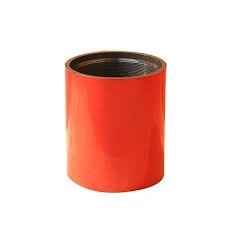- Afrikaans
- Albanian
- Amharic
- Arabic
- Armenian
- Azerbaijani
- Basque
- Belarusian
- Bengali
- Bosnian
- Bulgarian
- Catalan
- Cebuano
- Corsican
- Croatian
- Czech
- Danish
- Dutch
- English
- Esperanto
- Estonian
- Finnish
- French
- Frisian
- Galician
- Georgian
- German
- Greek
- Gujarati
- Haitian Creole
- hausa
- hawaiian
- Hebrew
- Hindi
- Miao
- Hungarian
- Icelandic
- igbo
- Indonesian
- irish
- Italian
- Japanese
- Javanese
- Kannada
- kazakh
- Khmer
- Rwandese
- Korean
- Kurdish
- Kyrgyz
- Lao
- Latin
- Latvian
- Lithuanian
- Luxembourgish
- Macedonian
- Malgashi
- Malay
- Malayalam
- Maltese
- Maori
- Marathi
- Mongolian
- Myanmar
- Nepali
- Norwegian
- Norwegian
- Occitan
- Pashto
- Persian
- Polish
- Portuguese
- Punjabi
- Romanian
- Russian
- Samoan
- Scottish Gaelic
- Serbian
- Sesotho
- Shona
- Sindhi
- Sinhala
- Slovak
- Slovenian
- Somali
- Spanish
- Sundanese
- Swahili
- Swedish
- Tagalog
- Tajik
- Tamil
- Tatar
- Telugu
- Thai
- Turkish
- Turkmen
- Ukrainian
- Urdu
- Uighur
- Uzbek
- Vietnamese
- Welsh
- Bantu
- Yiddish
- Yoruba
- Zulu
coupling stainless steel fitting
Understanding Coupling Stainless Steel Fittings A Comprehensive Guide
Stainless steel fittings, particularly coupling fittings, play a crucial role in various piping applications across numerous industries. These components are designed to connect pipes or tubes at different lengths and facilitate the seamless flow of fluids and gases. In this article, we will explore the different types of coupling stainless steel fittings, their applications, benefits, and maintenance tips to ensure longevity and efficiency.
What are Coupling Stainless Steel Fittings?
Couplings are mechanical devices used to connect two pieces of piping or tubing to create a longer run. Stainless steel, known for its exceptional corrosion resistance, durability, and strength, is an ideal material for manufacturing these fittings. Stainless steel couplings are available in various designs, including threaded, slip-on, and welded couplings, each catering to specific application needs.
1. Types of Stainless Steel Couplings - Threaded Couplings These fittings feature internal threads that allow them to be screwed onto the external threads of pipes. They are commonly used in situations where disassembly is required, making them easier to install and remove. - Slip-On Couplings Slip-on couplings are designed to be slid onto the pipe ends without threading. They are typically welded at the joints, providing a strong and permanent connection ideal for high-pressure applications. - Welded Couplings These employ welding methods to join pipes securely, providing robust connections suited for heavy-duty applications. Welded couplings can handle higher pressures and temperatures than their threaded counterparts. - Compression Couplings These fittings use a compressive force to clamp onto the pipe, providing a strong leak-proof connection. They are ideal in applications where a quick and secure connection is essential.
Common Applications of Stainless Steel Coupling Fittings
Stainless steel coupling fittings are widely used across various sectors due to their robustness and resistance to chemicals. Some common applications include
- Construction and Plumbing They are used in water supply lines, drainage systems, and HVAC systems for their durability and reliability. - Food and Beverage Industry Stainless steel is preferred in food processing and beverage applications due to its non-reactive nature, preventing contamination and ensuring food safety. - Oil and Gas The capability of stainless steel to withstand high pressures makes these fittings suitable for drilling and pipeline applications in the oil and gas industry. - Chemical Manufacturing Many chemicals can cause corrosion; hence, stainless steel fittings are vital for systems involving corrosive substances.
Benefits of Stainless Steel Coupling Fittings
Investing in stainless steel coupling fittings offers numerous advantages
- Corrosion Resistance Because of the alloying elements in stainless steel, these fittings resist rust and corrosion, ensuring a longer lifespan and lower maintenance costs.
coupling stainless steel fitting

- Strength and Durability Stainless steel fittings exhibit excellent tensile strength and can withstand extreme temperatures and pressures, making them suitable for demanding environments
.- Easy Installation Many types of stainless steel couplings are user-friendly, allowing for quick installation and adjustment.
- Hygienic Properties The non-porous surface of stainless steel fittings makes them resistant to bacteria growth, making them ideal for sanitary applications in the food and chemical industries.
Maintenance Tips for Stainless Steel Coupling Fittings
To maximize the lifespan of stainless steel coupling fittings, consider the following maintenance tips
- Regular Inspections Periodically check for signs of wear, corrosion, or leaks, addressing any issues immediately to prevent further damage.
- Cleaning Clean the fittings regularly using non-abrasive detergents to prevent the buildup of contaminants that could lead to corrosion.
- Proper Installation Ensure that fittings are installed correctly to prevent undue stress on the connections, which can lead to failure over time.
- Avoid Using Harsh Chemicals While stainless steel is resistant to many chemicals, specific solutions can still damage the surface. Always check compatibility when selecting cleaning agents.
Conclusion
Coupling stainless steel fittings are indispensable components in various industries. Their strength, versatility, and resistance to corrosion make them a favored choice for many applications. Understanding the types, benefits, and maintenance of these fittings can help you make informed decisions, ensuring efficient and reliable systems for your piping needs. Whether in construction, food and beverage, oil and gas, or chemical manufacturing, stainless steel coupling fittings stand as a robust solution for connecting your pipes safely and effectively.
-
Tubing Pup Joints: Essential Components for Oil and Gas OperationsNewsJul.10,2025
-
Pup Joints: Essential Components for Reliable Drilling OperationsNewsJul.10,2025
-
Pipe Couplings: Connecting Your World EfficientlyNewsJul.10,2025
-
Mastering Oilfield Operations with Quality Tubing and CasingNewsJul.10,2025
-
High-Quality Casing Couplings for Every NeedNewsJul.10,2025
-
Boost Your Drilling Efficiency with Premium Crossover Tools & Seating NipplesNewsJul.10,2025







